“The genuine quality to pick up the ball and run at defenders and penetrate or draw attention,” Trinidad and Tobago National Senior Team coach Stephen Hart told Wired868, “and then be able to dish the ball off to players is now absent in Trinidad and Tobago football. When you go to the Pro League, who really excites you when they get the ball?
“Of course players can still shake and have quick feet. They can elude somebody. But they don’t destroy and I think it is a disappearing quality.”
“Soca Warriors” coach Stephen Hart spoke to Wired868 about the qualities he wants to bring to the National Team, the depth of his player pool and the strengths and weaknesses of the Pro League. And why he enjoys watching Central FC attacker Kadeem Corbin and the Shivu Boys Hindu College player of Tyrel “Pappy” Emmanuel and Quinn Rodney.
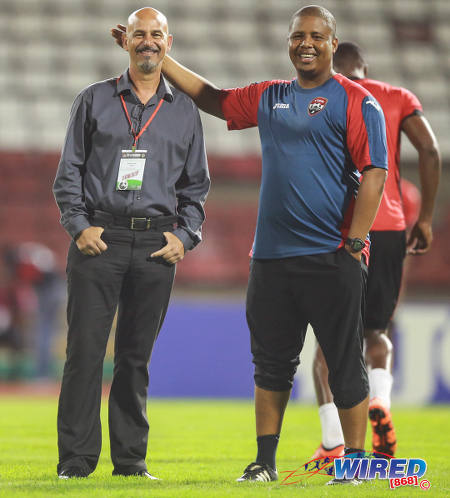
(Courtesy Allan V Crane/Wired868)
Wired868: What can Trinidad and Tobago football fans look forward to in 2016? And how costly was our 2016 Copa America Centenario play off defeat to Haiti?
Stephen Hart: Not getting to the Copa America was not only a disappointment, it was an opportunity lost to develop against some of the better teams in world football at the moment.
But we have to look forward. We (had) the first opportunity to have an all-local camp—a short camp albeit—and a game in Grenada. Now, we have two games against St Vincent (and the Grenadines), which to me is the ultimate priority at the moment.
Once that is completed, we will look at (our schedule for the rest of the year).
We have already secured a game against Uruguay, which is one of the top five or six teams in world football on their last four years of performance. And we are trying to secure a second game.
We originally thought we would play Chile but they want to play on the same date as Uruguay. And it is understandable because they want to peak at the right time for the tournament. So we are working on a second game in that time period.
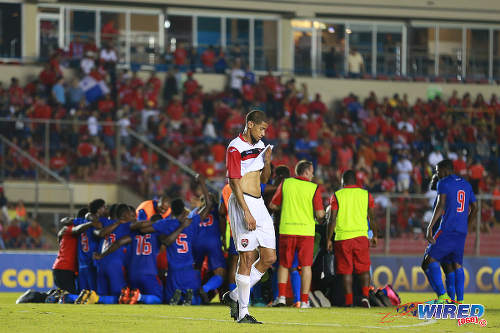
(Courtesy Allan V Crane/CA-images/Wired868)
Wired868: What is the difference in facing a team like Argentina or Uruguay in a friendly and in a tournament?
Hart: Well, I think the thing about the friendly game against Argentina (is that) it was their last game before they went to the World Cup. So obviously the game was a little more competitive than a regular friendly international, simply because players were playing for their selection. And players were playing also to be on the starting eleven.
I think it is going to be the same thing against Uruguay and if we get another game (against a South American nation) so close to the tournament. It will be their last game and that’s a lot different than if we were playing them last December or something like that.
So it does make a difference to them at that stage.
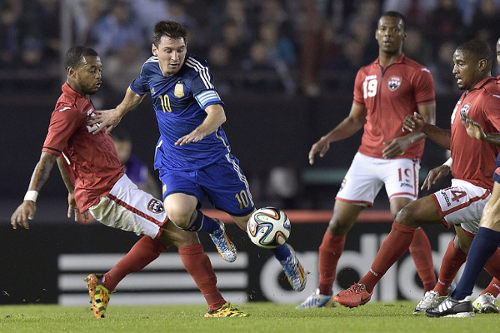
Argentina won 3-0.
(Copyright AFP 2014/Daniel Garcia)
Wired868: We have had a couple of injuries recently, are you satisfied with the depth of our player pool?
Hart: It’s the nature of football really (as far as injuries go). Contrary to popular belief, Trinidad and Tobago’s player pool is very small at the moment while we sort of wait for the maturity of some of the Under-20s to come up and to get themselves playing on a consistent basis. Not many of them are playing on a consistent basis.
The pool in general is a small pool. (Our talented young players from the National Under-23 and National Under-20 Teams) need more playing time and probably a couple of international friendlies to understand how to approach a camp environment and to observe them playing at a higher level.
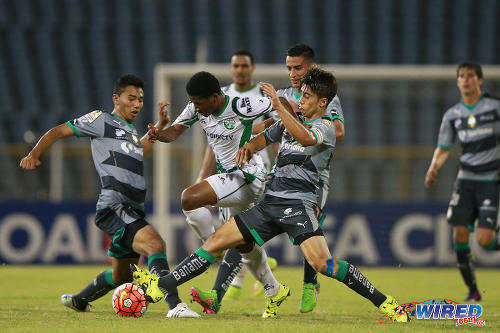
(Courtesy Allan V Crane/Wired868)
Wired868: What do you look out for when you go to Pro League games?
Hart: When you’re building a team, you have to look at it positionally. You can’t just pick players because they are having a good season or half a season or a couple of good games.
If in the position you are looking for, a player shows consistency or qualities. Or there is a player who can bring something completely different to the team that you can use tactically, of course you look for that player.
But, in building a team, you look for what you need positionally. You need two players per position roughly. (And) you need some sort of flexibility in terms of the thinking of the player, etcetera.
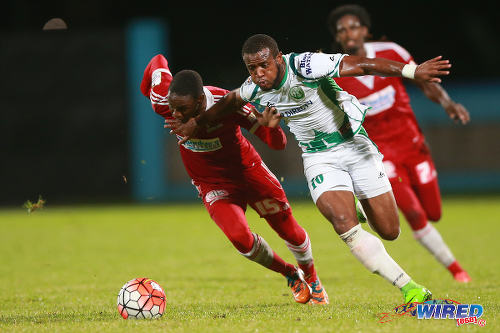
(Courtesy Allan V Crane/Wired868)
Wired868: You have complained about the fitness levels of Pro League players before? How do you gauge players’ individual fitness when a game is slow?
Hart: I can’t. I have seen a couple games in the Pro League and 90 percent of the games start off well; tactically, shape-wise, pressing and so on. Everything is beautiful.
But by the 40th minute, you already see a breakdown in shape and organisation and recovery and things like that. If one or two players are not physically capable, the whole team starts to break down. And even at an international level.
You saw in the US game for example, they were able to push in with a little more strength and vitality in the second half of the second half. And only in the last 10 or 15 minutes, we caught ourselves with the changes and started to push them back again.
I think that is the difference in international football. It is those that can mentally endure when things are past your comfort zone.
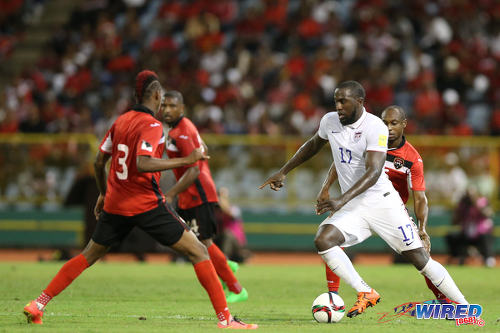
(Courtesy Allan V Crane/Wired868)
Wired868: What qualities are you looking to add to your squad right now?
Hart: We need a couple box to box midfielders. It will be very good if they have good shooting ability from outside the penalty area. Because I’m concerned with the amount of shots statistically from my team.
And I think right now in Trinidad and Tobago football, there is an absence of wide players who can pick up and destroy and penetrate and create opportunities from wide positions. So you are always looking for that.
And I love to play with full backs who can come forward. And full backs are far and few between in the league.
And I am talking about genuine fullbacks. No disrespect but some of them can defend and they do okay. But there are very few that have the capacity to get up and down the field.
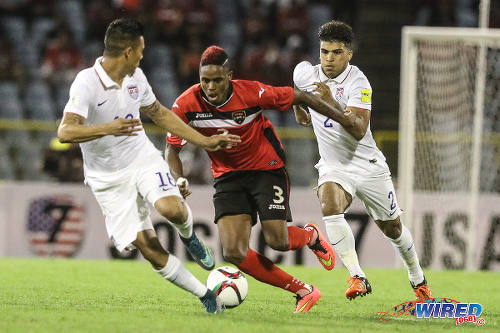
(Courtesy Chevaughn Christopher/Wired868)
Wired868: So you are finding it harder to find dribblers? Is it a crisis in the local game now?
Hart: The genuine quality to pick up the ball and run at defenders and penetrate or draw attention and then be able to dish the ball off to players is now absent in Trinidad and Tobago football.
When you go to the Pro League, who really excites you when they get the ball?
Of course players can still shake and have quick feet. They can elude somebody but they don’t destroy and I think it is a disappearing quality. Even when I watch a lot of (SSFL) games, there is not a lot of it. I think is something we need to address in our player development model.
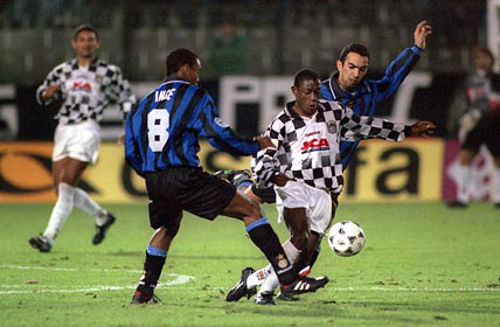
His victims here are former England captain Paul Ince (left) and France World Cup winner Youri Djorkaeff.
Wired868: How would we address that?
Hart: I think there has been a lot of emphasis on faking and shaking and less emphasis on dribbling as a penetrative action (and) attacking the space behind the defender.
(I am talking about) not just off-balancing the defender but going past; and now you are one player up because they are one player down. And now the second defender has to make a decision. Does he stay marking somebody or does he come to help cover the space you are attacking?
I think that kind of destructive dribbling is something that we need to encourage. When a player has that quality at a very young age, stop saying to them ‘pass the ball’.
You can teach them to pass the ball later. You can teach them to combine later. But if you don’t (nurture penetrative players then) you have to break teams down with passing, very intricate passing. And that is extremely, extremely difficult. Especially on our pitches.
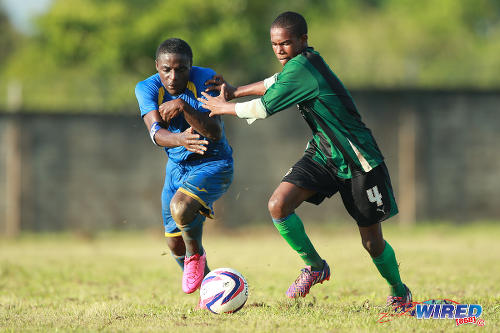
(Courtesy Allan V Crane/Wired868)
Wired868: I know you won’t want to give examples from the Pro League? But what about from the SSFL? Does Shiva Boys’ Quinn Rodney fit that role as a destructive dribbler?
Hart: Yes. Definitely. And I think he should be encouraged. And even the midfielder, “Pappy” (Tyrel Emmanuel). He should be encouraged when he shakes his man to attack that space in the midfield. Because getting between the lines is a very modern part of football.
It is not good enough to just shake your man and then next thing you know the man is back on top of you. Then you haven’t really done anything.
So you have to make defenders commit and make lines commit and then your players run off of that and you can be creative from the midfield. So it is not only about (dribbling) out wide. It is about from the midfield too.
So if I give you a modern example, you look at (Barcelona midfielder Andres) Iniesta and how he makes it happen. Even (Santi) Carzola with Arsenal. They get behind the midfield line and force the backline to make decisions.
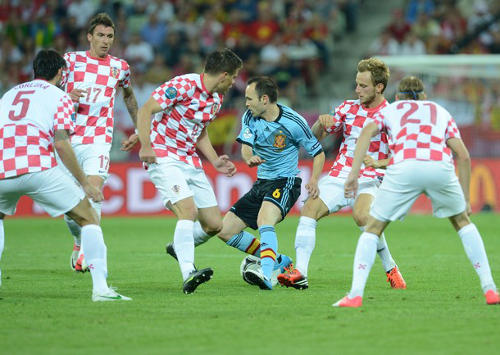
Iniesta’s first major tournament was at the Trinidad and Tobago 2001 Under-17 World Cup where he played at the Mannie Ramjohn Stadium.
Wired868: Are there other qualities we are missing now?
Hart: I think we used to have a lot of strikers like (Jerren) Nixon and Stern (John) who were really good in the box. Nixon could also come (at you) from outside the box.
We are not really producing the strikers I would like, who are aerially strong and two footed. We are limited at the moment.
But we are a small country and top player are always going to be like waves in an ocean rather than a river.
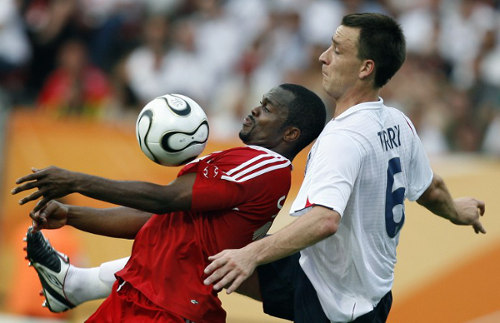
(Copyright AFP 2015)
Wired868: So it is just cycle and not that we are doing something wrong in player development?
Hart: At the end of the day, if you have a lot of football at youth level, the cream will rise to the top. That is what the big countries have. They have a lot of football and there is a lot of competition. Competition is what breeds excellence.
So when you have a lot of competition at the youth level, you will find that you would probably raise those kinds of players. So, yes, I would put it down to player development too. Maybe 50/50.
But right now I am racking my brain thinking who is coming through as a striker that can put fear into people.
I think Corbin has tremendous talent. But he needs guidance and he needs to be playing on a consistent basis. But certainly he has a good energy level and he gets into good positions and he can score goals. He has proven that.
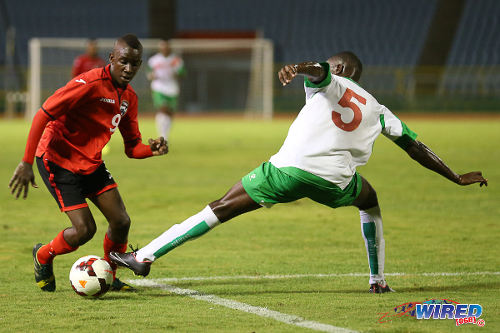
(Courtesy Allan V Crane/Wired868)
He reminds me a lot of Bert Neptune and he wouldn’t know how big a compliment that is. But I fear for him that, like so many other players, he might not realise the potential he really has.
Editor’s Note: Click HERE for Part Two as “Soca Warriors” head coach Stephen Hart talks about harsh lessons against Haiti and Honduras, what a Pro League collapse could mean to Trinidad and Tobago football, the Cornell Glen dilemma and why he has balls like grapefruits.
 Wired868 Wired868 for smart sport news and opinion
Wired868 Wired868 for smart sport news and opinion
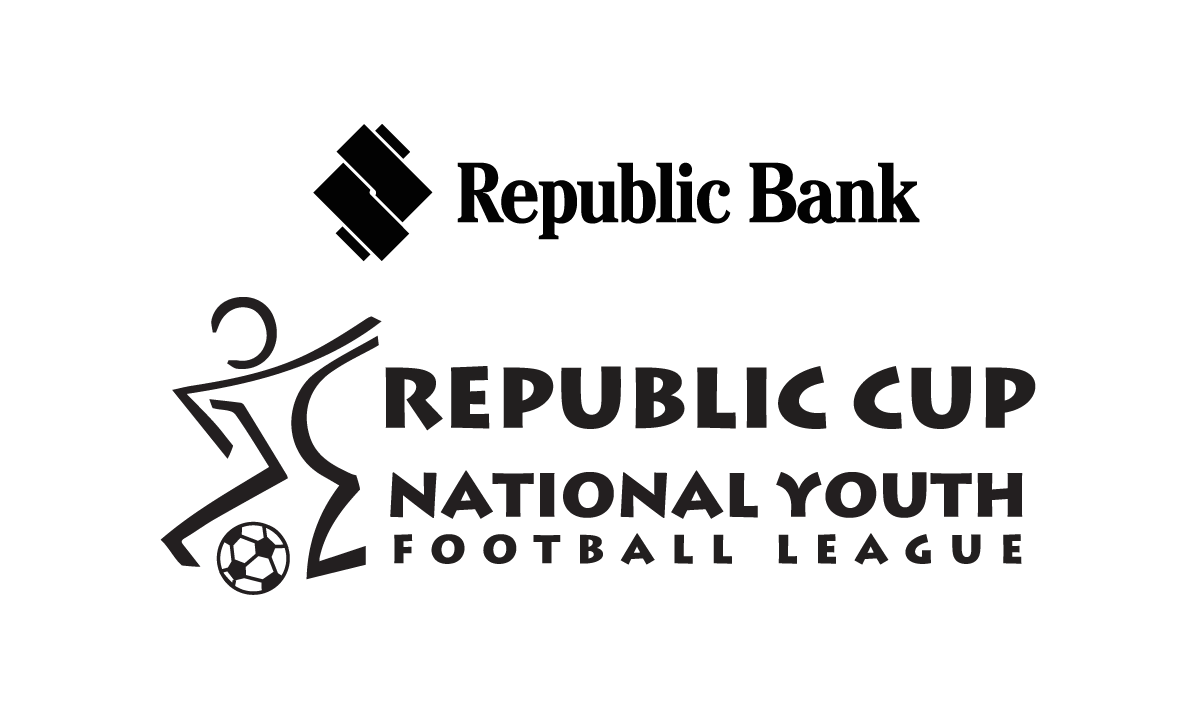

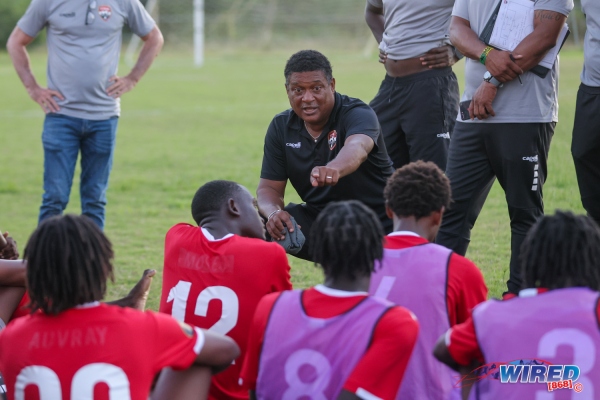
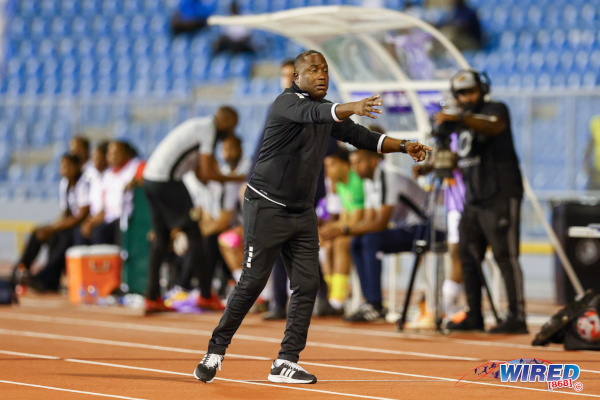
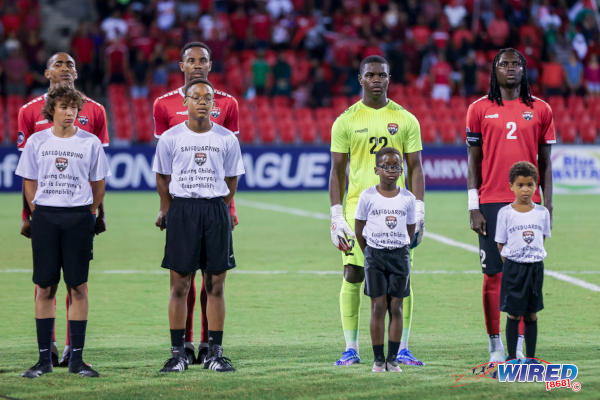
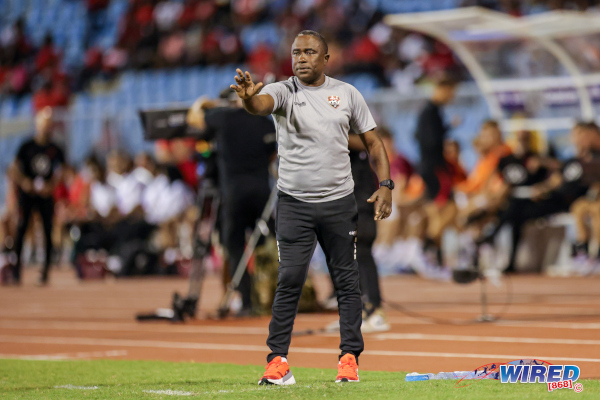
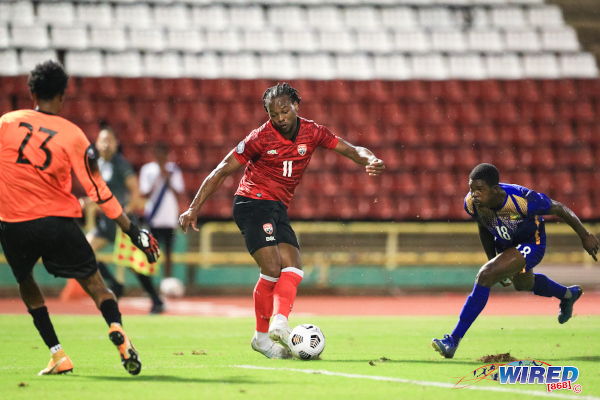
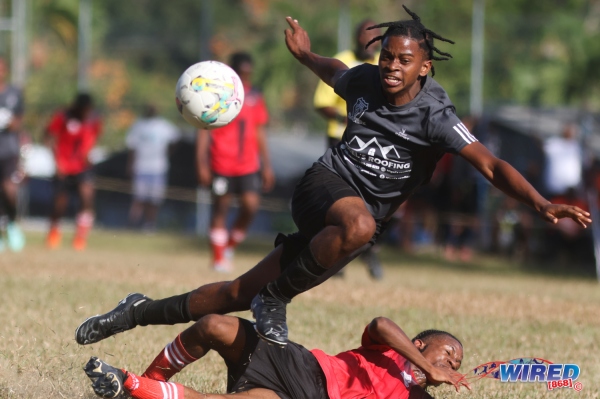

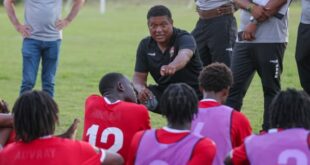
Now the dribbling is only from the mouth
Pele Tostaoo riverlino jarzino what were they passers or dribblers
Rivelino was both. But they could have all dribbled for sure.
Thanks so much for the support cousin!! One day I will be on that roster Craig Nico
Devyn Chevallier T&T needs you bro! Keep going bro you’ll be repping the red white and black soon!
My mind returned to this interview:
“The genuine quality to pick up the ball and run at defenders and penetrate or draw attention,” Trinidad and Tobago National Senior Team coach Stephen Hart told Wired868, “and then be able to dish the ball off to players is now absent in Trinidad and Tobago football. When you go to the Pro League, who really excites you when they get the ball?
“Of course players can still shake and have quick feet. They can elude somebody. But they don’t destroy and I think it is a disappearing quality.”
Tell u Corbin is d future and that’s 2018
2018?! Well I’d love to see it because I’m a fan.
Yeah but he isn’t a dribbler ball pest is the only one that does that for me Burd
Levi?
Playing locally i mean
Corbin is not a dribbler? James Saunders go watch d football nah oh gosh everytime some so called football experts open their mouth they may u wonder??
I’ve been watching Corbin quite a number of years “so called coach” lol maybe you don’t know what the definition of a dribbler is or it is one of Corbin’s best kept secrets
James Saunders guess Stephen Hart ain’t know either!! Bc that’s what he classify him as read d story nah!!
So true man! Functional sessions for the various groups within your squad whether it be for the defenders, Midfielders etc. Individual sessions to address the very specific needs of each players…
Johan Cruyff: “If you take golf, you have a teacher for the drive, a teacher for the approach play and a teacher for the putt. That’s three specialist coaches for one player. In football one coach looks after 25 players. You can’t compare a centre-forward with an outside right or a midfield player. Their own game needs many different qualities and physical skills. That’s why I believe in individual coaching sessions. You have to take care of the individuals.”
Kudijah Birot pappurr. Tyrel Emmanuel but aaa aa ?
https://m.youtube.com/watch?v=wsQTpFUR3nU
https://m.youtube.com/watch?v=H6046tO1BeM
For once we have a coach who is thinking. I would encourage the minister of sport with TTFA to focus on development as a priority. Start building a long term plan to develop players for the future.
Totally agree..but this country is very small – and it would shock you to know that the players themselves know who the best are – your scouting system ensures that you are always on top on the best talent coming thru…if I knew that my job was contingent on the success of this program then I would be scouring this country looking for the best..its a major advantage that we have over other competing countries…
Unless maybe you have different styles of coaches at every level to make sure there isn’t a strong bias in terms of the type of players selected.
Good food for thought Tony. I have one problem with the elite academy though. They will always miss players. So we have to coach a wide pool and then allow them to play for their communities and schools up to a certain age. So they can pass on knowledge.
Personally I think we had the damn thing right in the first place.
In the 80s and early 90s, there were zonal all star teams, leagues like Eddie Hart and national teams from under-14 straight up to under-23 that actually toured and played matches. And we were a hot bed of talent then.
Less chance of players slipping through the cracks then. Or not getting a chance to get some football knowledge.
If we had a football academy, it wouldn’t have helped players like Jemmott and Carlos Edwards and Dennis Lawrence who were either late bloomers or off the beaten path.
Players like Pappy and Quinn Rodney are the same. Academies won’t help them because they won’t get in depending on who is in charge.
Lasana, the one mistake we cannot make is to assume that methods being used outside could work right away locally. I know we talk quite a bit about the Dutch approach here in T&T and we compare what is going in the US, Spain, England etc to what is being done in T&T. I’ve read quite a bit about the approach Belgium has taken recently and much of the rhetoric mentioned here is similar to what they have done – small sided games, free play, less coaching, let the players figure out the solutions to problems on the pitch etc. However, locally we are not operating on a level playing field – no pun intended. For instances, 95% of the coaches in T&T are attempting to develop young players on sub standard surfaces where the hardest thing is to reassure a youngster that his attempt at a first time pass or finish was the right thing to do , and the fact that the ball ended up in the stands was due to a horrible bounce as opposed to incorrect technique… his confidence over time is affected and thus he is not as assured as a youngsters in Spain, Holland or the US who may be training on a modern Astro Turf surface or a properly prepared pitch. Sounds like a minor thing but in the grand scheme of things it’s major. Secondly, the pool of ultra talented players that we are dealing with is extremely small compared to any of the nations that we hope to be competing against. In most first world football countries your primary responsibility is to “create the environment” and it is assumed that the cream will rise to the top. In Argentina, Germany, Spain – there are generations to come of players who will ensure that these nations are competing for World Cups. In T&T there maybe 2 or 3 players only per GENERATION that may give us an opportunity to even qualify for a World Cup. What that means is that our approach locally to developing young players must be different in that coaches cannot rely on conventional methods when putting together a development plan. We must, as a football community – identify the absolute best at an early enough age and ensure that they are brought together so as to begin addressing all aspects of their development – the physical, technical, tactical and psychological. This ensures that we are not “hitting and hoping” that a Levi Garcia or Dwight Yorke randomly comes along – rather, we are putting into place an infrastructure that ensures that the best players who give us the best opportunity for success internationally – “down the road” are identified and developed to the best of our ability. We simply do not have the extensive pool of potentially great youth players that those countries
have and thus conventional wisdom will not address our short falls. What works in those countries or anywhere else may not work in T&T. Secretly, that has been the mission from day one, the assumptions that I made when left the US about player development had to be thrown out the door, in truth I was somewhat naive about the challenges that exist locally but I strongly believe that it can be done. My advice to anyone wanting to be part of that process is to rethink what you may have known and grown accustomed too abroad. In fact, before you even think about “the football” – the methods, the coaches, balls, goals, cones etc. think about the cost of a vibratory roller and a grass cutting tractor. My colleagues abroad would laugh at that statement and I did too initially, that is until I had to find the funding to purchase and then learn to operate such machinery. Our challenges are different and before we can think about methods regarding player development, we must first think about the infrastructure found in places where great players are being developed.
in the US anything under 13 is 8v8 (u8-10) and 9v9 (u11 and u12)… 11 v 11 starts at u13…. at my club, we play 4 mths outdoor… 3 months indoor (futsal/indoor) and then 3 mths back outdoors…. we use fusal to work on foot speed and movement…. It is a good way to help work on the finer aspects of game… personally I am not really a big fan… I am more a fan of Free play… let the boys/girls play (small goal style).. it lets them enjoy playing the game without refs and coaches… the Dutch have started going to this model of games where the kids play and enforce the rules…. They are seeing the decline of the creative players and are trying to address it…… Bottom line…. If we are not doing these things as a country at the youth level we are wasting time… we will ALWAYS have to to look outside to fill holes because we are not trying to develop youth talent, which in of itself is a skill…..
Actually he also made a separate comment that was an interesting pitch for Futsal as a way to develop young players for even the outdoor game.